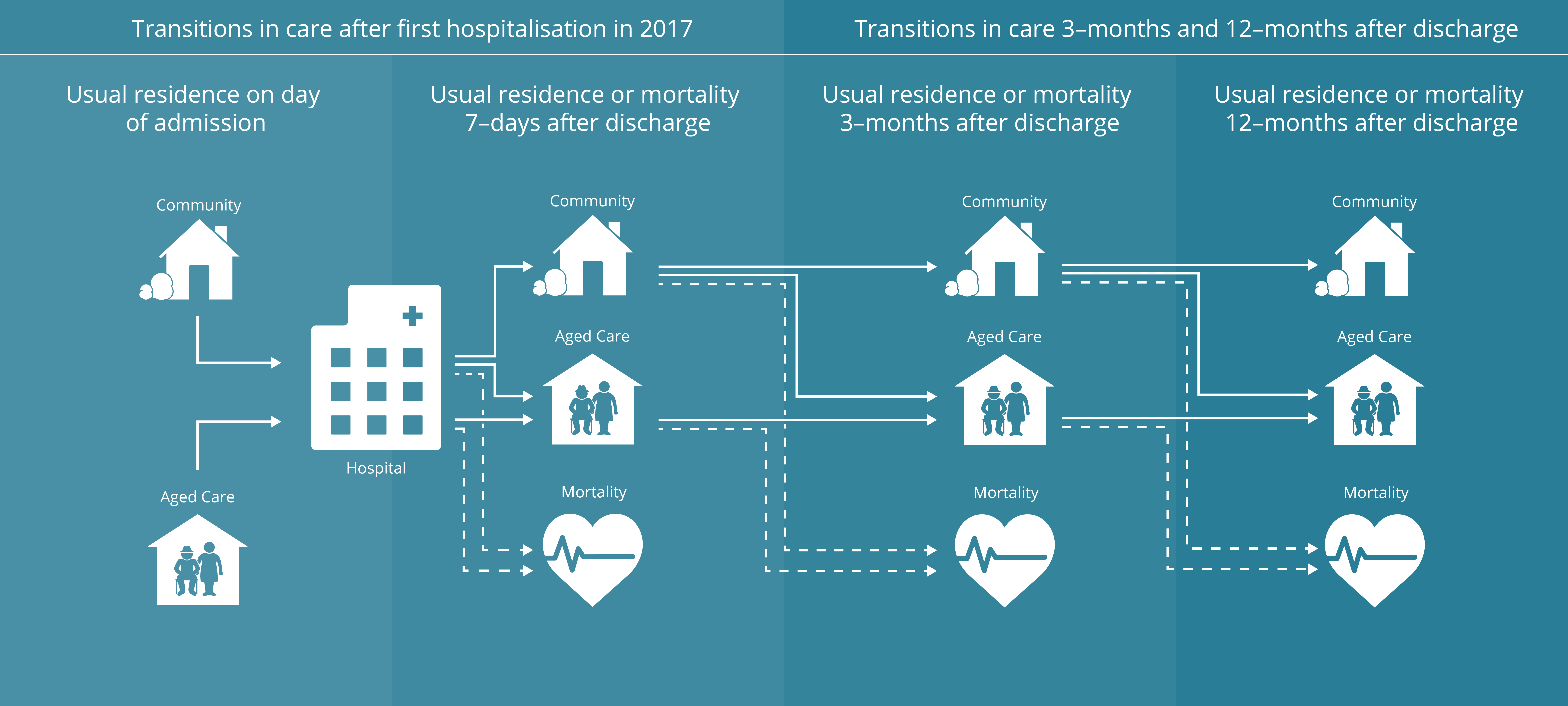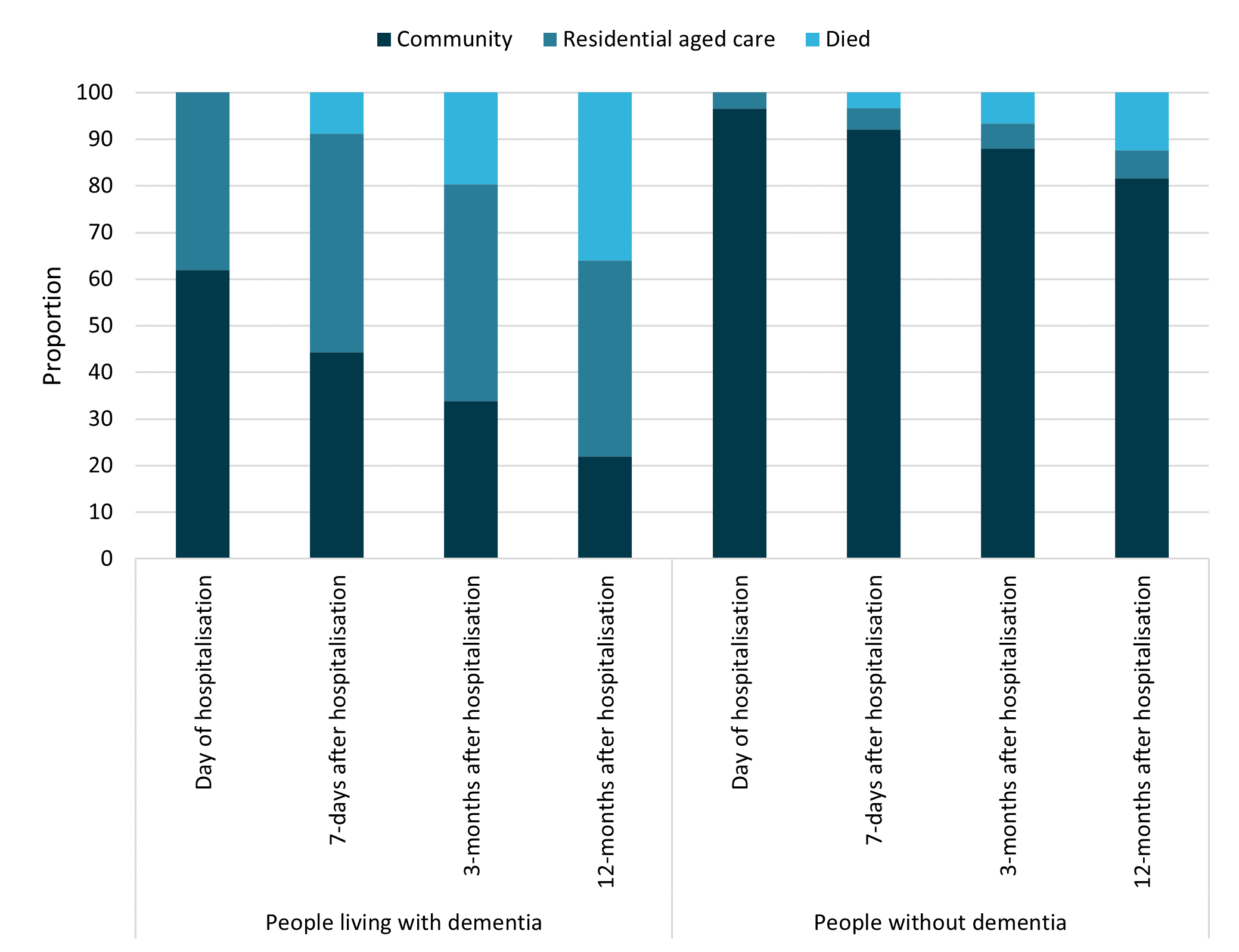12-month transitions of care and mortality outcomes
People living with dementia were more likely to be living in residential aged care and to die in the 7-days, 3-months, and 12-months after their first hospitalisation than people without dementia (Figure 1 and Table S1.1).

People living in the community on the day they were admitted to hospital
On the day of admission to their first hospitalisation, 62% of people living with dementia and 97% of people without dementia were living in the community (Figure 1).
Figure 2 shows that among the nearly 49,000 community-dwellers living with dementia:
- Almost 1 in 4 (23%) entered residential aged care for the first time in the 7 days following their first hospitalisation. This includes people entering permanent residential aged care and those accessing respite care. This increased to 33% at 3-months and to 37% at 12-months from discharge.
- 71% continued to live in the community at 7 days after discharge. This decreased to 55% at 3-months and to 35% at 12-months from discharge.
- 5% died during the hospitalisation or within 7 days of discharge. This increased to 12% at 3-months and to 27% at 12-months from discharge.
For the 605,000 people without dementia, only 2% entered residential aged care in the 7-days from discharge and this increased to 4% at 12-months from discharge. Around 3% died during the hospitalisation or within 7 days of discharge and this increased to 11% at 12-months from discharge.
People living in residential aged care on the day they were admitted to hospital
On the day of admission to their first hospitalisation, 38% of people living with dementia and 3% of people without dementia were living in residential aged care (Figure 1).
Figure 2 shows that among the 30,000 people living with dementia who were living in residential aged care prior to their first hospitalisation:
- 14% died within 7-days of discharge
- 31% died within 3-months of discharge
- 50% died within 12-months of discharge.
By comparison, of the nearly 22,000 people without dementia who lived in residential aged care prior to their hospitalisation 11% died during their hospitalisation or within 7-days of discharge, 24% died within 3-months and 41% died within 12-months of discharge.
Figure 1 Usual residence or mortality up to 12-months after first hospitalisation for people living with dementia and people without dementia

Source: AIHW NIHSI 2018–19, analysis of NIHSI.
Figure 2 Transitions to residential aged care or mortality up to 12-months after first hospitalisation for people living with dementia and people without dementia
The figure is a Sankey chart and shows the flow of people between living in the community, living in residential aged care or dying in the 7-days, 3-months and 12-months after their first hospitalisation in 2017. People living with dementia were much more likely to transition to residential aged care or to die after discharge from hospital compared to people without dementia.

Source: AIHW NIHSI 2018–19, analysis of NIHSI.


